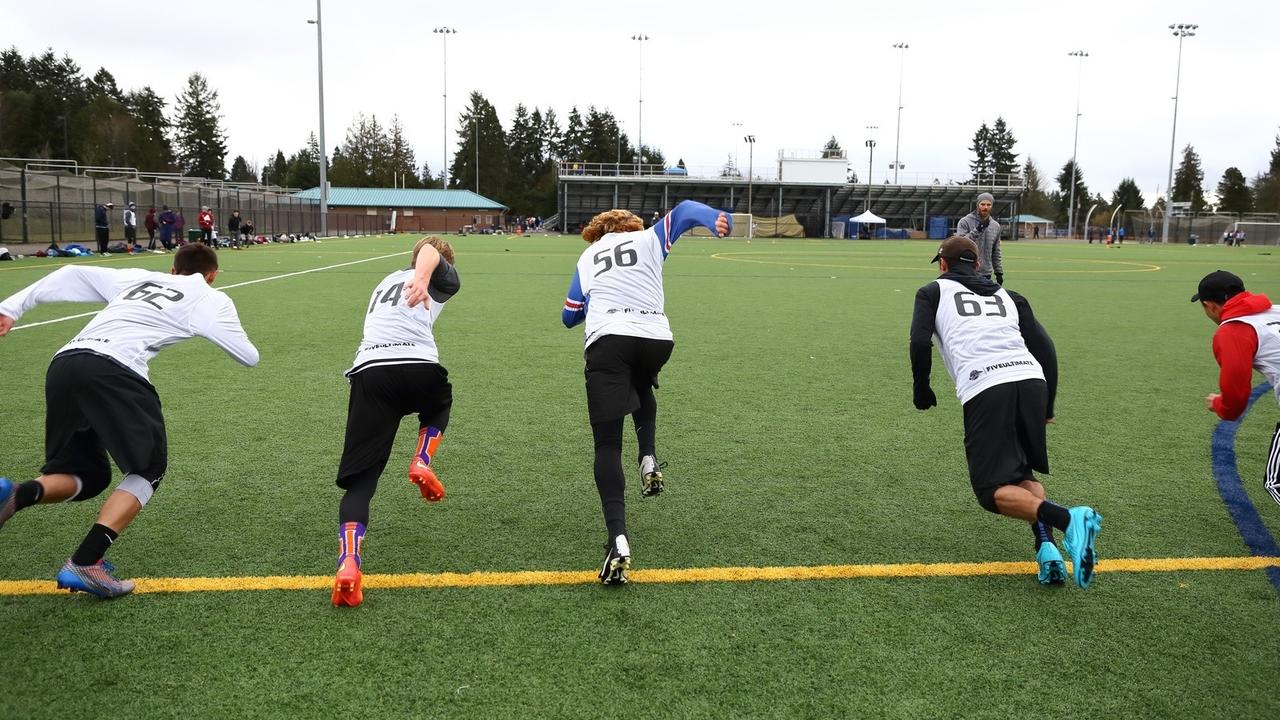Tapering in time—adjust your training volume to boost your performance

After months of hard work, your season’s goal is almost within reach. You’re feeling in good shape, but you’re nervous about your training in the run up to this important event.
This is the situation for Ultimate Athlete Project teams and players across the world as US club competitions approach, regional tournament draw near across Europe, league action kicks off in Australia, and more!
There are plenty of questions you might be asking yourself. Are you doing too much? Too little? How can you keep the gains you’ve pushed to build while making sure you don’t burn out out ahead of the big finale?
While it’s natural to have questions like these, understanding the science of the taper will help you have the best possible chance of a confident and explosive performance come that first pull on Saturday morning.
What is tapering?
Tapering is decreasing training volume in the build up to your key competition or event in order to maximize performance. Studies have shown that an effective taper can improve performance by up to 6% if done correctly. As such, most periodized training programs include a period of tapering leading up to the event that’s ultimately being trained for.
By cutting back on training load, tapers allow for greater recovery, less accumulated fatigue, several favorable physiological changes, and a final supercompensation effect. As long as they’re done right! Here are our tips to help you create the best possible taper:
Start early and gradually
Tapers are generally effective over a longer period than people think. In a long-term periodized program like the Ultimate Athlete Project, where our athletes work for months towards a season-defining tournament, they undertake a four-week taper phase which starts gently. The first two weeks aren’t much different to the pre-taper routine, but the third and fourth weeks see a more dramatic reduction in training.
While this long of a taper can be difficult to adjust to psychologically, or excessive for someone who’s not been training quite so hard, it will work well for committed athletes with a season of strength and conditioning work behind them. It’s natural to be nervous about implementing a taper like this. But it’s important to know that the adaptations you’ve gained will not completely disappear with a few weeks of lighter training! Even the cardiovascular system, among the faster to adapt to training load, would take 10 days or so to adjust your VO2 max.
Cut back on volume
The purpose of the taper is to give your body a chance to rid itself of accumulated fatigue that’s built up over the course of your training regime. Your body doesn’t always fully recover from one workout to the next. The taper allows you the recovery time to do that by lowering your overall training load.
Reducing your training load means either working at a lower volume or a lower intensity. Volume generally translates to sets or repetitions when we’re talking about weight training, and intensity corresponds to the weight you’re lifting. Studies have found that lowering volume while maintaining intensity makes for the most effective taper.
This means cutting down on sets and reps in the weight room. Two weeks before a tournament (in a typical four-week taper), this might involve doing two-thirds of your normal reps. An easy way to achieve this would be to go from three sets of each exercise down to two sets. The next week, you could cut down again to just one set, and even lower the reps. In fact, you want to decrease the volume of your training as much as 60-90% of your regular training volume in the two weeks leading up to your tournament of choice.
Keep the intensity high
While you’re lowering your training load by cutting volume, your intensity should stay the same. That means you need to keep lifting heavy weights and doing sprint sessions at full pace. The high intensity will keep your performance levels up while the extra rest goes about healing and recovering fully.
Avoiding injury is key here, so stick to workouts you know and love. Do the exercises that make you feel confident. Don’t make yourself more stressed trying to learn something new or struggling through an exercise you don’t enjoy.
Resist extra rest days
Cutting back on volume should give your body the resources it needs to recover. Remember, you’re looking to reduce your overall training load by as much as 90% in the buildup, so you do not need to throw in any extra days of rest. Working up until the day before the tournament is totally fine. Keeping your body moving is actually a boon, as you’ll maintain your mobility and keep your nervous system primed for action. Mobility can change almost daily, so staying active is key.
Use the time you save
Doing far fewer sets means you’ll have some time on your hands in the run up to your tournament when you’d otherwise be in the gym. Make the most of this time! Visualization exercises are a great option here. Put together your own mental highlight reel and build your confidence. Revisit your team’s playbook and brush up on every detail. Think about your mental and physical preparation when it comes to weather, delays, contested calls, teams you struggle against, or anything else that requires attention.
Trust in the taper
While the physical benefits have been laid out above, tapering also has a psychological impact. You want to finish it feeling comfortable, prepared, and confident. Trust that your training and the taper have got you this far and will work for you on the pitch. Then go out there and play to your potential.
If you don't already have a periodized training program that builds your athletic performance specifically for your season-defining event, get started with the Ultimate Athlete Project today!
Unsure? Read more about the benefits of starting your strength training in season.

